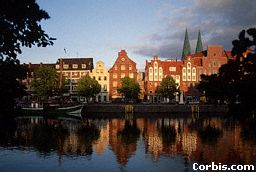| Group | Germanic (with English, German, Swedish etc.), West Germanic (with Frisian, Dutch etc.) |
| Geography | North Germany (including Hamburg, Lubeck, Bremen etc.) |
| History | Since the 13th century the heir of the Old Saxon (Old Low German) language is called Low Saxon. Formerly a flourishing tongue, spoken in the rich cities of Hansa, it was later subject to strengthening influence of High German. Today it is spoken mainly in rural areas, though some revival is taking palce for the last fifty years in the universities of Northern Germany. |
| Phonetics | Its main difference from the High German language is the absence of the '2nd consonant shift' which took place in Old High German. This means that voiceless stops remained as they were (Appel, maken, Water vs German Apfel, machen, Wasser). Ancient narrow vowels were also preserved (Huus vs. German Haus) as well as the original s before consonants (Steen [ste:n] vs. German Stein [shtaen]). The nasal consonants were dropped lengthening the preceding vowel (Gous, fif vs. German Gans, fnf). |
| Nominal Morphology | The system of morphology seems quite similar to other languagef the subgroup: German, Dutch, Frisian. The only significant difference is the coinciding personal pronouns of the dative and accusative cases: mik 'me' vs. German mir (dat.), mich (acc.). |
| Verbal Morphology | The two main peculiarities of the verbal conjugation are the following: a common ending in the plural (e.g. -et in Present), and the dropped prefix ge- in the Past Participle. These two features make Saxon closer to the English language. |
| Lexicon | There is a number of differences in the lexicon of Low German and High German languages. For example, Low German Aust 'harvest' vs. German Ernte, Low German lttje 'little' vs. German klein etc. In general, the Low German vocabulary remains much more archaic. In the last two centuries there are quite a lot of loanwords from German, especially in the field of culture and industry. |
| Writing | Latin alphabet |
| Close Contacts | Low German influenced greatly Swedish and Danish in the Middle Ages. The modern language has close contacts with German and Frisian languages. |
| Sample | Daar hest 'n Daler
gah up'n Markt kp di eene Koh un ok een ltt Lmmken daarto. German: Da hast du einen Taler, geh' auf den Markt, kauf dir eine Kuh und auch ein kleines Lmmchen dazu. English: There you have a thaler, go to the market, buy yourself a cow and a little sheep for it. |
| Picture |  |
| More info |